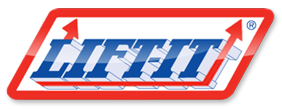Wire rope slings have been the backbone of the sling and rigging industry for many years. Industrial lifting, crane and rigging companies have successfully used wire rope slings for many different applications. Even with the advent of synthetic slings in the early 1970’s, wire rope slings continue to have a place in rigging lofts worldwide.
It is important to know how to select a wire rope sling for a particular application. Initially wire rope slings were “hand spliced” and some may still use hand spliced wire slings. It is well known that rotation of the load can cause a hand spliced wire rope sling to come undone resulting in a dangerous situation.
Wire rope slings with mechanical spliced, Flemish eyes are a much better sling than a hand spliced sling.
If is also important to expose sling users to wire rope sling education. It never ceases to amaze me how many riggers, who use wire rope slings daily do not know or understand D/d ratio and the effect it has on wire rope sling efficiency. “D” (the diameter of the object you rig around) divided by “d” (the diameter of the wire rope sling) play an important part in determining overall sling capacity.
A 25/1 D/d ratio provides the sling user with 100% sling efficiency. In other words, if one rigs around a 25 inch diameter pipe with a 1 inch wire rope sling at a 90 degree basket hitch configuration, the sling user can use the sling at the 90 degree, basket work load limit as indicated on the sling tag. Conversely if the same, 1 inch diameter wire rope sling is rigged around a 4 inch diameter steel pipe resulting in a 4/1 D/d that same sling would have to be downgraded by 25% and would only have 75% of the rated, 90 degree basket work load limit.
Wire rope sling education should also inform the sling user of the differences in constructions, designs and materials. Braided wire rope slings, single body slings, multiple leg wire rope slings, strand laid grommets, swage socket assemblies all need to be used properly and inspected by competent inspectors, who have attended competent sling and rigging hardware training.
Even the core of the wire rope has profound implications for sling users and their safety.
Wire rope slings fabricated with Independent Wire Rope Cores (IWRC) have a higher temperature limit than slings fabricated with Fiber Cores (FC). Wire rope slings with fiber cores cannot be used at temperatures exceeding 180 degrees Fahrenheit. Wire rope slings with independent wire rope cores can be used at temperatures not exceeding 400 degrees Fahrenheit.
Some wire rope sling users believe that wire rope slings are cut-proof. This is also where wire rope sling education has to provide the basis for a correct perspective. Anything, even diamonds can be cut when tension and compression join forces. The ASME B30.9 sling safety standard states, “wire rope slings should be protected from damage by materials of sufficient strength, thickness and construction.”
If you have any questions, feel free to contact the sales professionals at Lift-It Manufacturing. We will assist you in determining how to order the correct sling for your application. Our Rigging Resource Guide contains a wealth of information on the selection, use and inspection of wire rope slings, chain slings, metal mesh slings, web slings and roundslings.

